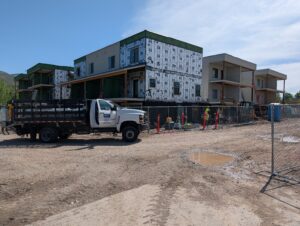What is the structure that is going to be holding up your house? More than any of our previous questions, your initial answer may be that’s why you hired an architect. While it’s defintely true, we still like to explore your options with you and see what comes out of the conversation.
We need your soils report to determine the foundation and the lowest level floor construction. Can the house be built on spread footings or does it need to be piers and grade beams? Can the lowest floor be slab on grade or does it need to be a floating floor system? Is the floating floor wood or steel joists?
The wall construction is very important. Do you want to do a conventional stick frame house or maybe a light steel house or a block house, SIPS, ICF‘s or something else? How thick are the walls going to be and how are they insulated?
What are the floor decks framed with? Do you want to run the ductwork through the floor spacing or would you be fine with some soffiting? Do you have any special loading requirements that we need to look at for the floors.
What sort of stair design do you favor? A straight run or an L shape or a U shape? Winders or flat landings? The minimum width or added width? The maximum steepness or something less steep?
What sort of ceiling heights would you like to see on each level? Are there any double height spaces, vaulted or coffered ceilings? There are several options for the roof framing and you can use a combination. Consider flat bottom trusses, scissor trusses, rafter framing, attic trusses and closed flat roofs.
A number of these posts have discussed sustainable features, next up a summary with a few new points.
TOC Post: Introduction
Previous Post: Elevations and Exterior Design
Next Post: Sustainable Features









